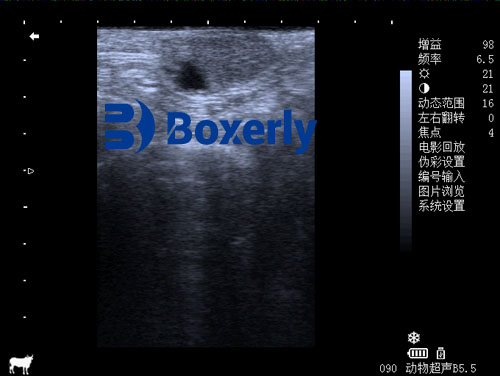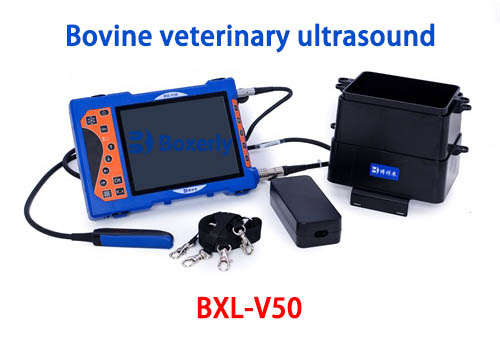In the evolving field of veterinary medicine, technology plays a pivotal role in transforming animal healthcare. Among the most notable innovations is the handheld veterinary ultrasound scanner—a compact, mobile solution that enables veterinarians to diagnose, monitor, and manage animal health with greater ease and efficiency. As this technology gains traction globally, experts and practitioners alike are recommending it for its practicality, Wirtschaftlichkeit, and clinical value. Companies such as BXL are at the forefront, offering high-quality portable ultrasound devices that meet the needs of modern veterinarians.

Handheld Veterinary Ultrasound Scanner Applications
The Global Shift Toward Portability and Precision
Across North America, Europe, and parts of Asia, veterinarians have increasingly recognized the value of portable ultrasound machines. Unlike traditional bulky units confined to clinical settings, handheld devices empower vets to provide services in rural areas, Bauernhöfe, or even in-home environments. In countries like the United States, where mobile veterinary practices are on the rise, portability is not just a preference—it’s a necessity. Dr. Karen Johnson, a mobile vet based in Texas, notes: “Being able to carry diagnostic equipment directly to the field has revolutionized how we work. A handheld scanner allows me to conduct fast, real-time diagnostics without compromising accuracy.”
European practitioners echo similar sentiments. In Germany and the UK, where equine and large animal care is a prominent field, the use of handheld ultrasound scanners has significantly improved diagnostic timelines. Many vets are now able to perform reproductive checks, cardiac evaluations, and soft-tissue scans right at the stables or barns, increasing convenience for both animal and owner.

Teaching farmers how to use handheld veterinary ultrasound scanners
Why Handheld Ultrasound is Recommended
There are several compelling reasons why handheld veterinary ultrasound scanners are widely recommended:
-
Portabilität und Komfort: These scanners are lightweight and can easily be carried in a small case or backpack. This makes them ideal for veterinarians who travel to remote areas or provide on-site services.
-
Echtzeit-Bildgebung: Most modern handheld devices offer high-resolution, real-time imaging capabilities. This feature is especially valuable for procedures like pregnancy checks in livestock, identifying abdominal obstructions in dogs, or evaluating organ function in exotic pets.
-
Wirtschaftlichkeit: For clinics and individual practitioners, the lower price point of handheld scanners compared to full-sized machines makes them an affordable entry point into diagnostic imaging. This affordability also promotes broader access in developing regions.
-
User-Friendly Interfaces: Thanks to advances in software, many handheld devices now come with intuitive touchscreens, customizable settings, and app-based control, making them easier to use even for less-experienced technicians.
-
Wireless Connectivity: Devices from companies like BXL offer wireless probes that connect to tablets or smartphones, reducing the clutter of wires and increasing flexibility in confined or unpredictable environments.

Guiding farmers on the use of handheld veterinary ultrasound images
BXL and Innovation in Veterinary Imaging
BXL, a notable name in the medical imaging industry, has earned global attention for its range of portable ultrasound products tailored to veterinary use. Their devices combine functionality with rugged design, ensuring durability in demanding field conditions. One of their standout models features dual-probe technology, allowing a seamless switch between linear and convex probes without changing devices—a time-saver for busy practitioners.
The BXL handheld veterinary ultrasound scanner supports a variety of species, including small animals, equines, and livestock. Features such as needle guidance, Doppler-Bildgebung, and customizable presets make it a versatile tool in any clinical toolkit. Moreover, BXL prioritizes battery life and water resistance, critical for outdoor or farm-based diagnostics.
In interviews with veterinarians using BXL products in Australia and Brazil, many praised the brand for its reliability. “In cattle reproduction, timing is everything,” said Dr. Luiz Almeida, a bovine vet in São Paulo. “The BXL scanner gives me accurate results on the go. I can scan, record, and review in minutes.”
Impact in Developing Regions
In developing nations, access to traditional veterinary infrastructure is often limited. Here, handheld ultrasound scanners can dramatically improve animal welfare outcomes. Projects sponsored by international NGOs have equipped rural veterinarians in sub-Saharan Africa and Southeast Asia with these devices, enhancing early disease detection and reducing mortality in livestock populations.
Zum Beispiel, in Kenya, veterinary outreach programs have integrated portable ultrasound devices to improve reproductive management among smallholder dairy farms. The ability to perform on-site pregnancy checks has led to more efficient breeding practices, increased milk production, and better economic outcomes for farmers.
Training and Adoption
While the technology is sound, proper training is essential to maximize the utility of handheld ultrasound scanners. Several institutions and online platforms now offer targeted training for veterinarians, covering image interpretation, scanning techniques, and device calibration. BXL has partnered with education providers to offer tutorials and customer support in multiple languages, making their technology more accessible to a global audience.
Dr. Emily Carter, who teaches veterinary diagnostics at a university in Canada, highlights this point: “Handheld devices are powerful, but only in the hands of someone who understands them. As more students train with these tools from the start, the overall standard of care will improve.”

Handheld veterinary ultrasound image
Looking Ahead: AI and Telemedicine Integration
The future of handheld veterinary ultrasound scanners may include artificial intelligence and telemedicine integration. Some newer models already feature automatic image analysis, which assists in identifying anomalies and reduces diagnostic time. Cloud-based platforms allow remote consultations, letting a vet in a rural area consult with a specialist across the globe in real time.
BXL has indicated its intent to incorporate AI into its future lineups, focusing on auto-detection features and cloud storage for seamless case sharing. This progression could prove especially useful in wildlife conservation efforts, where real-time health assessments are critical but resources are scarce.
Schlussfolgerung
Handheld veterinary ultrasound scanners represent a technological leap that is redefining veterinary practice across the world. Whether used in a high-tech animal hospital or in the remote fields of a developing country, these devices bring diagnostic power closer to the point of care. As the technology continues to evolve, and as companies like BXL push the boundaries of portability, affordability, and functionality, it is no surprise that handheld ultrasound scanners come highly recommended by veterinary professionals around the globe.
Their ability to deliver precise, real-time insights into animal health—anytime, anywhere—makes them not just a convenience, but an essential tool in the modern veterinarian’s arsenal.
